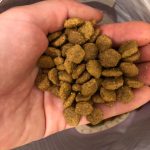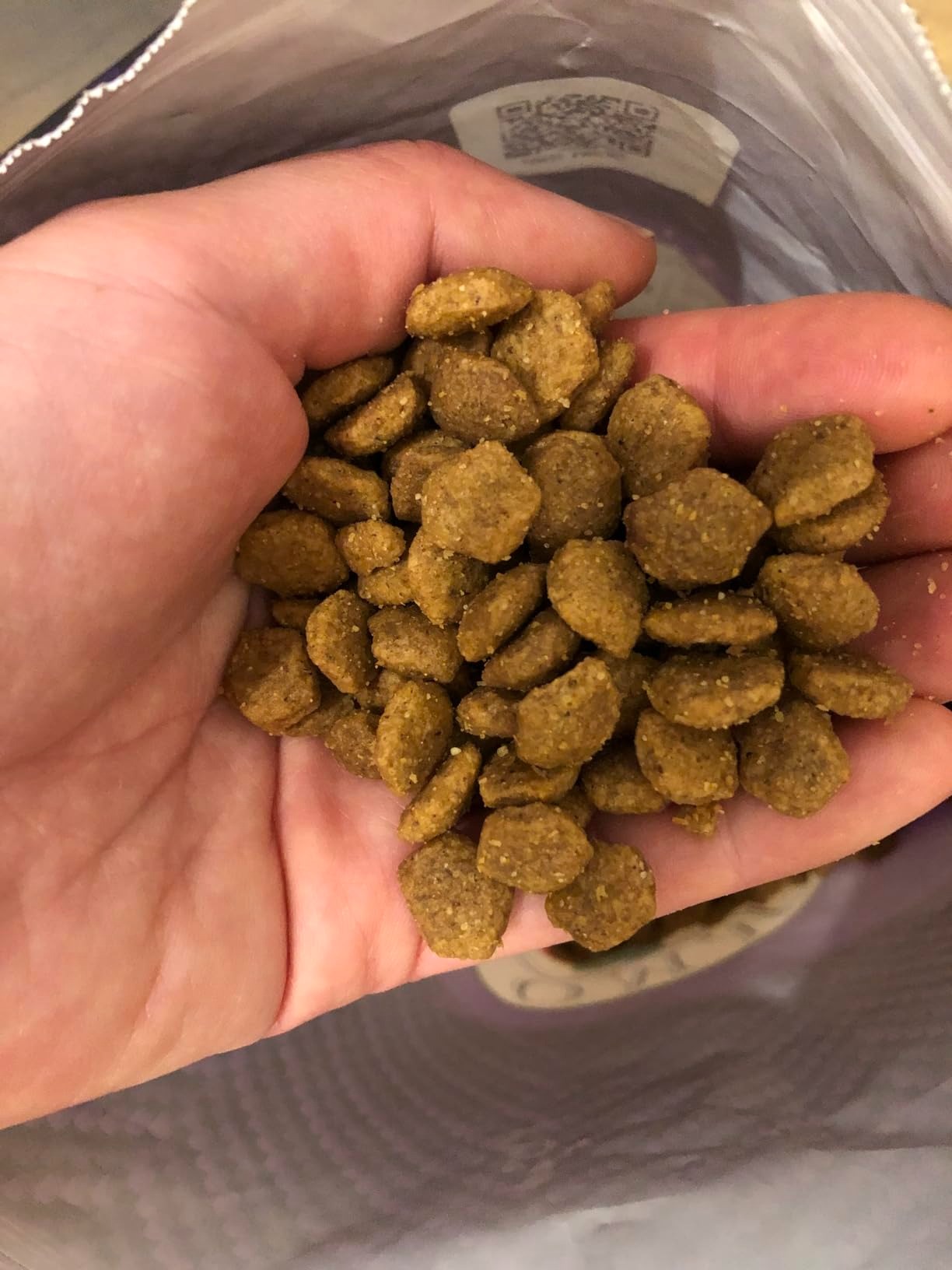Introduction to Hypoallergenic Dog Food
Hypoallergenic dog food is specially formulated to reduce allergic reactions in dogs with sensitive skin or digestive systems. Unlike conventional diets, it eliminates common allergens like beef, wheat, or artificial additives, using novel proteins and limited ingredients to minimize irritation.
Allergies in dogs often manifest as itching, ear infections, or gastrointestinal upset. These formulas support pets with food sensitivities, autoimmune conditions, or chronic skin issues. Key benefits include improved coat health, reduced inflammation, and better nutrient absorption.
When choosing a hypoallergenic dog food, prioritize ingredients like hydrolyzed proteins, omega-3 fatty acids for skin health, and grain-free options. Look for brands with vet endorsements and AAFCO certification to ensure balanced nutrition.
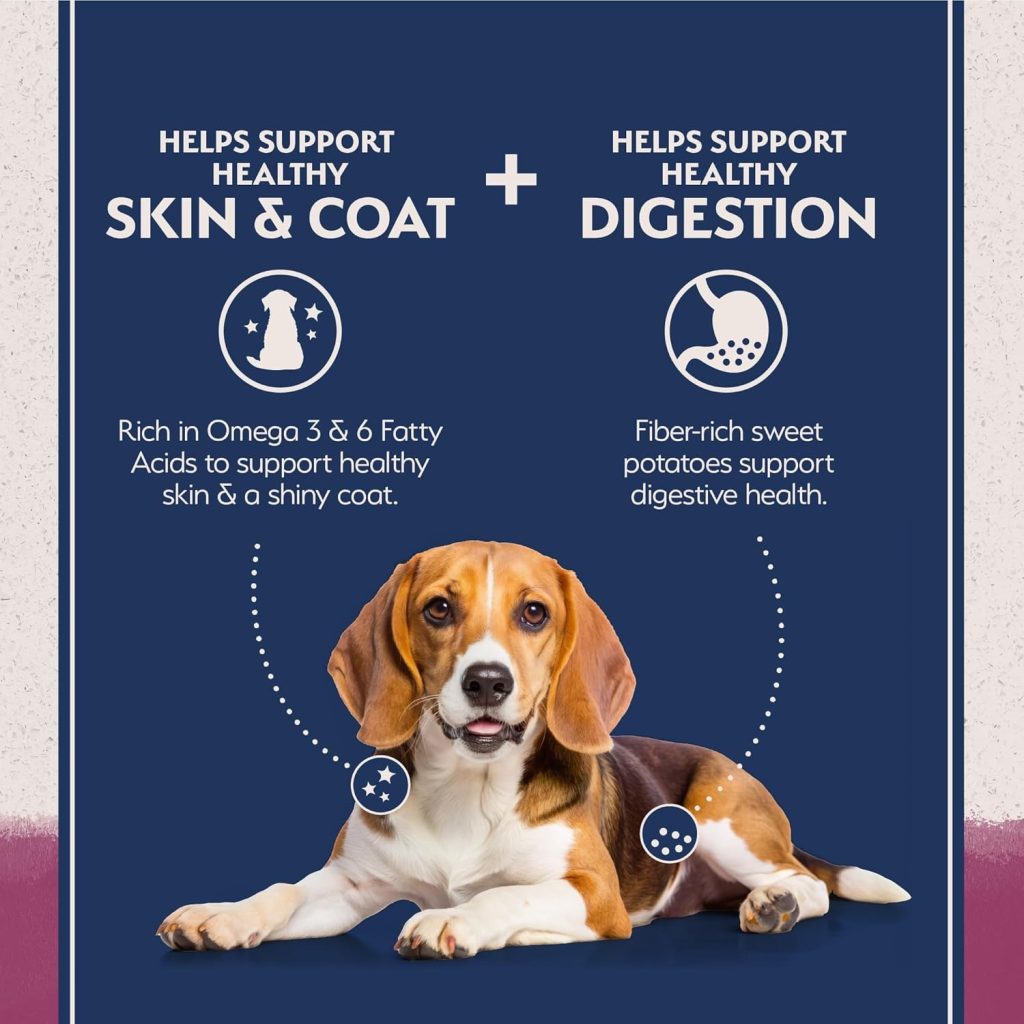
This guide explores how to identify allergy symptoms, select the right formula, and transition to a diet that enhances your dog’s well-being.
Common Allergens in Dog Food
Allergies in dogs often stem from specific ingredients in their diet. Here are the most frequent hypoallergenic dog food targets to avoid:
1. Proteins:
- Beef: Top allergen causing skin rashes and itching.
- Chicken: Triggers ear infections and digestive upset.
- Dairy: Lactose intolerance leads to vomiting or diarrhea.
2. Grains:
- Wheat: Linked to chronic ear infections and skin inflammation.
- Corn/Soy: Common culprits for gastrointestinal issues.
3. Additives:
- Artificial Preservatives: BHT/BHA may weaken immunity.
- Fillers: By-products or corn syrup disrupt gut health.
Symptoms of Allergy:
- Persistent scratching, hotspots, or hair loss.
- Diarrhea, gas, or chronic vomiting.
- Chronic ear infections or red, inflamed skin.
Pro Tip: Opt for hypoallergenic dog food with novel proteins and limited ingredients to minimize reactions.
Key Factors in Selecting the Right Formula
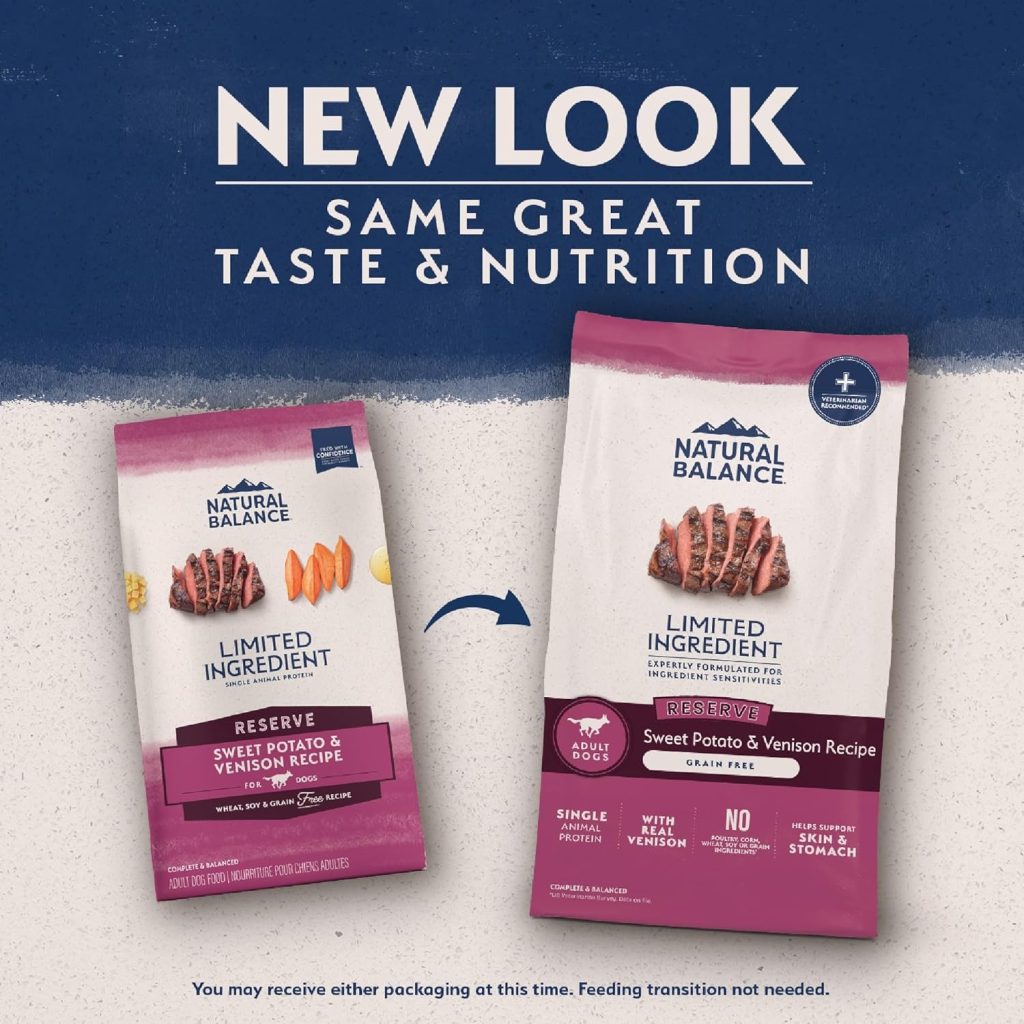
Choosing the right hypoallergenic dog food requires evaluating several critical factors to ensure it meets your pet’s unique needs. Below is an in-depth breakdown of what to consider:
1. Ingredient Quality and Composition
- Novel Proteins:
- Best Options: Venison, duck, lamb, or salmon are less likely to trigger allergies compared to common proteins like beef or chicken.
- Digestibility: Duck and turkey have high digestibility scores (~90%), making them ideal for sensitive stomachs.
- Hydrolyzed Proteins: These are broken into smaller molecules (e.g., Royal Canin Hydrolyzed Protein) to avoid immune reactions in severe cases.
- Fillers to Avoid:
- Grains: Wheat, corn, and soy are common allergens and low in nutritional value.
- Artificial Additives: BHA/BHT preservatives and synthetic colors (e.g., Red 40) can worsen inflammation.
2. Limited Ingredients for Sensitivity Management
- Formula Structure:
- Opt for diets with 4–6 main ingredients, such as:
- Example 1: Duck, sweet potatoes, peas, flaxseed, and vitamins.
- Example 2: Salmon, chickpeas, green beans, and sunflower oil.
- Fewer ingredients reduce the risk of cross-reactivity.
- Opt for diets with 4–6 main ingredients, such as:
- Allergen-Free Claims:
- Look for “single-source protein” labels (e.g., “Made with 100% venison”).
- Avoid vague terms like “meat by-products” or “animal digest,” which may contain hidden allergens.
3. Grain-Free vs. Grain-Inclusive Options
- Grain-Free Benefits:
- Ideal for gluten-sensitive dogs or those with IBS.
- Use alternatives like sweet potatoes, quinoa, or oats for fiber and energy.
- Grain-Inclusive Options:
- Choose hypoallergenic grains like rice or barley if your dog doesn’t react to them.
4. Certifications and Safety Standards
- AAFCO Approval:
- Ensures the formula meets minimum nutrient requirements for dogs.
- Look for “Complete and Balanced” on packaging.
- Human-Grade Ingredients:
- These must comply with FDA standards for human consumption.
- Third-Party Testing:
- Brands like Blue Buffalo Basics undergo independent lab testing for contaminants.
Pro Tips
- Rotate Brands Every 6 Months: Prevent overexposure to the same proteins.
- Consult a Vet: For severe allergies, consider elimination diets or blood tests.
By prioritizing these factors, you can select a hypoallergenic dog food that alleviates symptoms, supports long-term health, and aligns with your dog’s unique needs.

Understanding Essential Ingredients
The right ingredients make all the difference in hypoallergenic dog food. Key components include:
1. Proteins:
- Venison: High in omega-3s for skin health.
- Salmon: Rich in anti-inflammatory fatty acids.
- Lamb: Easily digestible for sensitive stomachs.
2. Carbohydrates:
- Sweet Potatoes: Gentle on digestion and rich in fiber.
- Quinoa: Complete protein source with essential amino acids.
3. Fats:
- Fish Oil: Omega-3s reduce itching and improve coat shine.
- Coconut Oil: Eases gut inflammation.
4. Vitamins & Minerals:
- Vitamin E: Combats skin allergies.
- Zinc: Heals hotspots and skin lesions.
5. Probiotics:
- Support gut health and immunity (e.g., Lactobacillus strains).
Avoid: Grains like wheat, corn, and artificial additives that trigger allergies.
Top Hypoallergenic Dog Food Brands
Here are top brands for hypoallergenic dog food:
1. Royal Canin Hypoallergenic:
- Uses hydrolyzed protein (soy) to avoid immune reactions.
- Ideal for severe allergies; vet-recommended for skin issues.
2. Blue Buffalo Basics:
- Limited-ingredient recipes with real meat first (e.g., duck and sweet potato).
- Grain-free and free from artificial additives.
3. Orijen Single Protein:
- 85% fresh meat (venison, salmon) for nutrient density.
- No grains or potatoes—supports sensitive digestion.
4. Hill’s Prescription Diet:
- Developed for IBD and skin allergies.
- Contains omega-3s and prebiotics for gut health.
Pro Tip: Match brands to your dog’s symptoms.
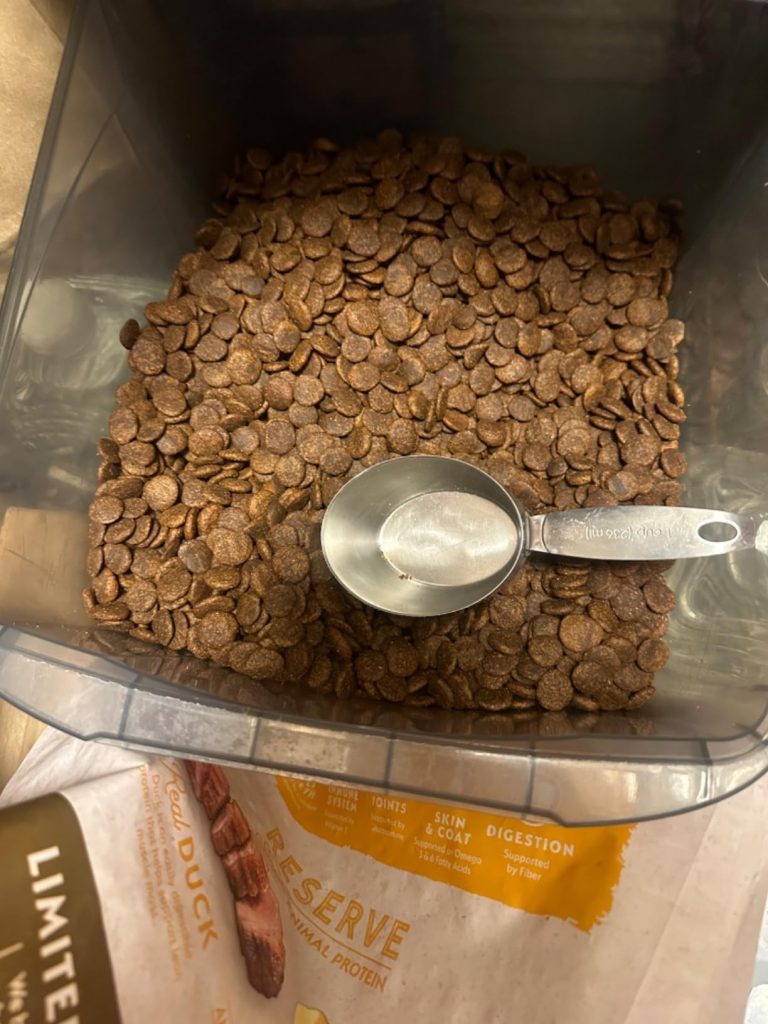
Identifying Allergy Symptoms in Dogs
Allergies in dogs can be challenging to diagnose but are often revealed through observable physical and behavioral changes. Here’s a detailed guide to recognizing common symptoms and understanding their implications:
1. Skin Reactions
Allergies frequently manifest as skin issues. Look for:
- Persistent Itching: Dogs may excessively lick, chew, or scratch areas like the paws, belly, armpits, or ears. This behavior can lead to raw, irritated skin.
- Hotspots (Acute Moist Dermatitis): Sudden red, inflamed patches that worsen rapidly. These areas may appear moist, have a foul odor, and are often found on the chest, legs, or flanks.
- Rash or Lesions: Raised, red bumps (hives) or scaly patches may develop. Chronic allergies can cause thickened, darkened skin (lichenification) from repeated scratching.
- Secondary Infections: Bacterial or yeast infections may occur due to broken skin. Signs include yellow pus-filled blisters, crusty scabs, or a greasy coat with a musty smell.
2. Digestive Disturbances
Allergies can disrupt the gastrointestinal tract, leading to:
- Vomiting or Diarrhea: Frequent episodes after meals, sometimes with mucus or blood.
- Gassiness and Bloating: Excessive gas or a swollen abdomen may indicate food intolerance.
- Loss of Appetite: Some dogs may refuse food due to stomach discomfort.
3. Ear and Eye Issues
Allergies often target sensitive areas like ears and eyes:
- Chronic Ear Infections: Inflamed, red ear canals with thick, dark discharge. Dogs may shake their heads or scratch ears repeatedly.
- Yeast Infections: A yeasty odor, reddened skin inside the ear, and waxy buildup are hallmark signs.
- Eye Discomfort: Watery or gooey eye discharge, squinting, or pawing at the eyes.
Differentiating Allergies from Other Conditions
- Parasites: Flea allergies cause similar itching but often with visible flea dirt (black specks) in the fur.
- Infections: Bacterial skin infections or ear infections may occur independently of allergies but are common secondary issues.
- Food Intolerance vs. Allergy: Intolerance causes digestive symptoms without skin issues, while food allergies involve both.
When to Switch to Hypoallergenic Dog Food
If symptoms persist for more than two weeks despite addressing fleas or environmental allergens, consider:
- Elimination Diet: Switch to a hypoallergenic dog food with a novel protein (e.g., venison, duck) and no grains for 8–12 weeks. Monitor improvements in skin and digestive health.
- Vet Consultation: Blood tests or skin prick tests can identify specific allergens.
Proactive Steps
- Rule Out Triggers: Keep a diary of symptoms and possible allergen exposures (foods, seasonal changes).
- Environmental Control: Use air purifiers, wash bedding frequently, and groom your dog regularly to remove allergens.
By recognizing these symptoms and working with a vet, you can tailor a plan—such as hypoallergenic dog food or allergy medications—to improve your dog’s quality of life.

Transitioning to a New Diet
Switching to hypoallergenic dog food requires a gradual transition to avoid digestive upset. Follow these steps:
Step1: Start Slow (Days 1–3)
- Mix 25% new food with 75% old.
- Monitor for diarrhea or vomiting.
Step2: Increase Gradually (Days 4–6)
- Raise to 50% new food.
- Offer smaller portions if appetite decreases.
Step3: Final Transition (Days 7–10)
- Switch to 100% new diet.
Key Tips:
- Duration: Allow 7–10 days for full transition.
- Watch for Reactions: If diarrhea persists, slow down the process.
- Water Access: Ensure clean water is always available.
Pro Tip: If your dog refuses the new food, mix it with a small amount of low-sodium broth to encourage eating.
FAQs About Hypoallergenic Dog Food
Q1: How do I know if my dog has food allergies?
A: Look for symptoms like itching, ear infections, or vomiting. A vet can confirm via blood tests or elimination diets.
Q2: Can hypoallergenic dog food cure allergies?
A: No, it manages symptoms but doesn’t cure genetic predispositions.
Q3: Are grain-free options always better?
A: Not necessarily. Focus on your dog’s specific needs—some tolerate grains well.
Q4: How long does it take to see improvement?
A: Symptoms may improve within 4–6 weeks with the right formula.
Q5: Can I rotate brands?
A: Yes! Rotate every 6 months to prevent overexposure to the same ingredients.
Final Tip: Always consult a vet before switching diets to ensure safety.

